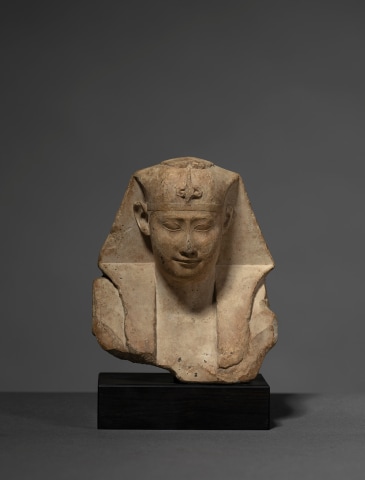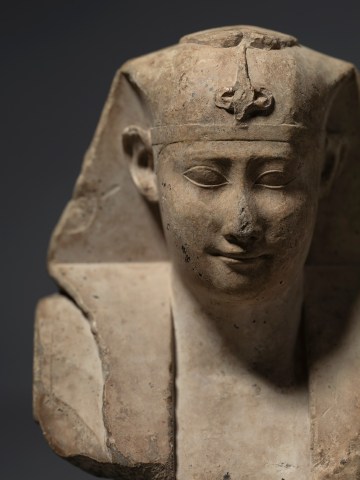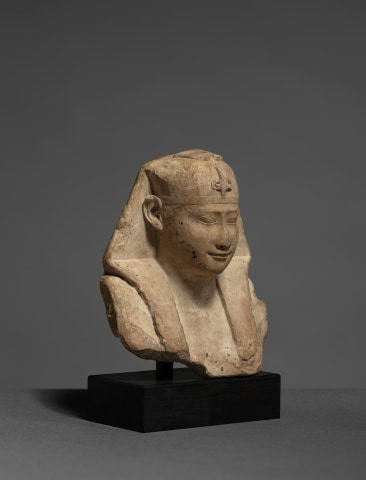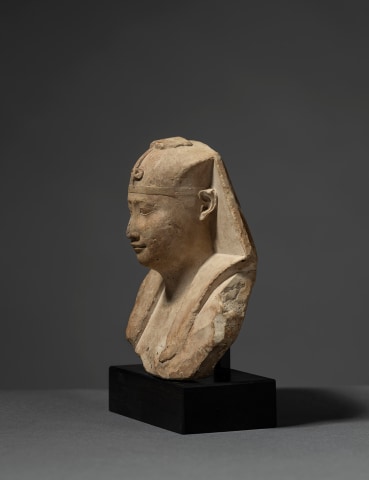Further images
Sculptor’s model, or trial piece, of a bust of a Pharaoh. He
is wearing the Nemes headdress with lappets falling either
side of the face onto the chest, being held in place by a
simple band around his forehead, from which a uraeus rises.
A raised area at the crown of the head perhaps indicates a
stylised scarab beetle. The eyes are precisely outlined. The
back of the model is flat as are the sides of the shoulders. An
old label to the back reading ‘Collection Charles Kelekian
No.390”. Dendritic staining to the surface and some chips
specifically to the tip of the nose and uraeus, the proper right
lower corner broken away; a piece without restoration.
The Nemes is an attribute reserved solely for the pharaoh,
whilst the uraeus over the forehead, which is symbolic of the
goddess Wadjet, represents divinity, sovereignty, and royal
authority over Lower Egypt. The facial features, with softly
modelled brow, crisp eyelids, slightly smiling mouth, and well-
defined ears attest to the finesse of the craftsmanship.
Provenance
Charles Dikran Kelekian (1899-1982), New York, USA; inventory sticker ‘No. 390’ on reverseJack Josephson (1930-2022), New York, USA; acquired from the above prior to 1982
Literature
Compare Nadja Samir Tomoum, The Sculptors' Models of the Late and Ptolemaic Periods (Cairo, 2005), pl.11c,d; Cairo CG 33328.For a similar example with a stylised scarab on the head compare Paul Edmund Stanwick, Portraits of the Ptolemies: Greek Kings as Egyptian Pharaohs (Austin, 2003), p.172, fig.59[B9]







